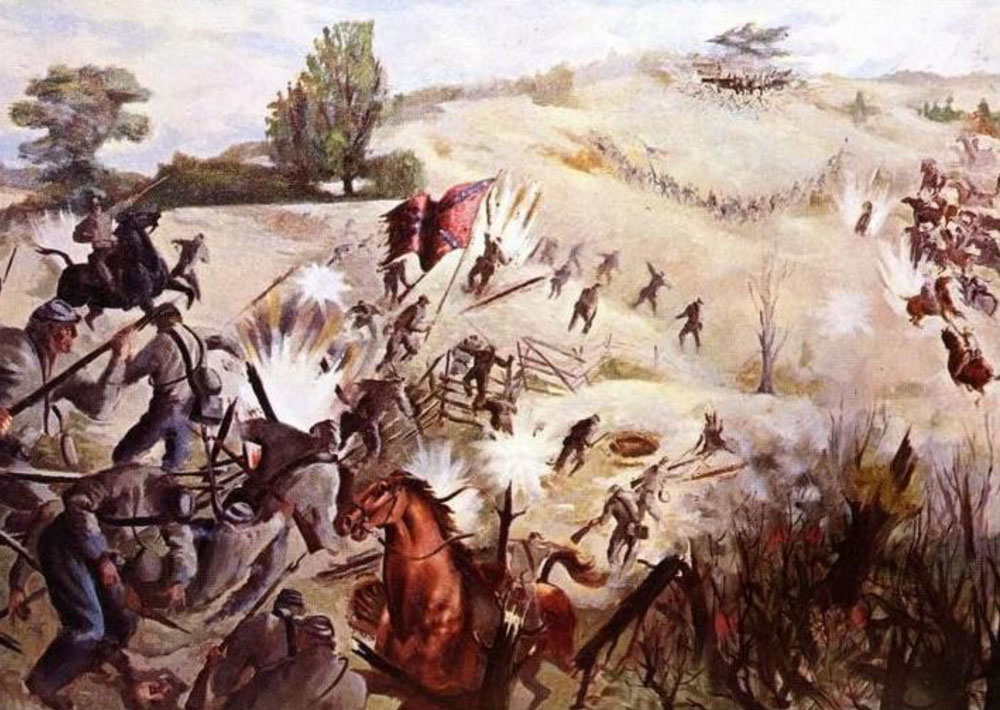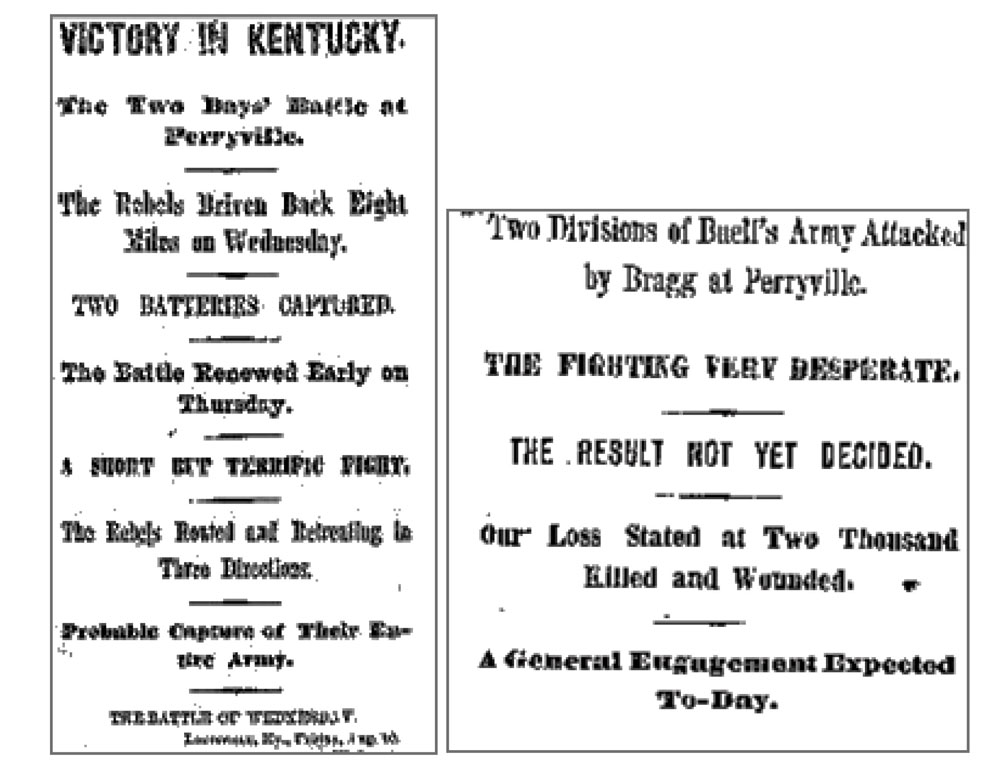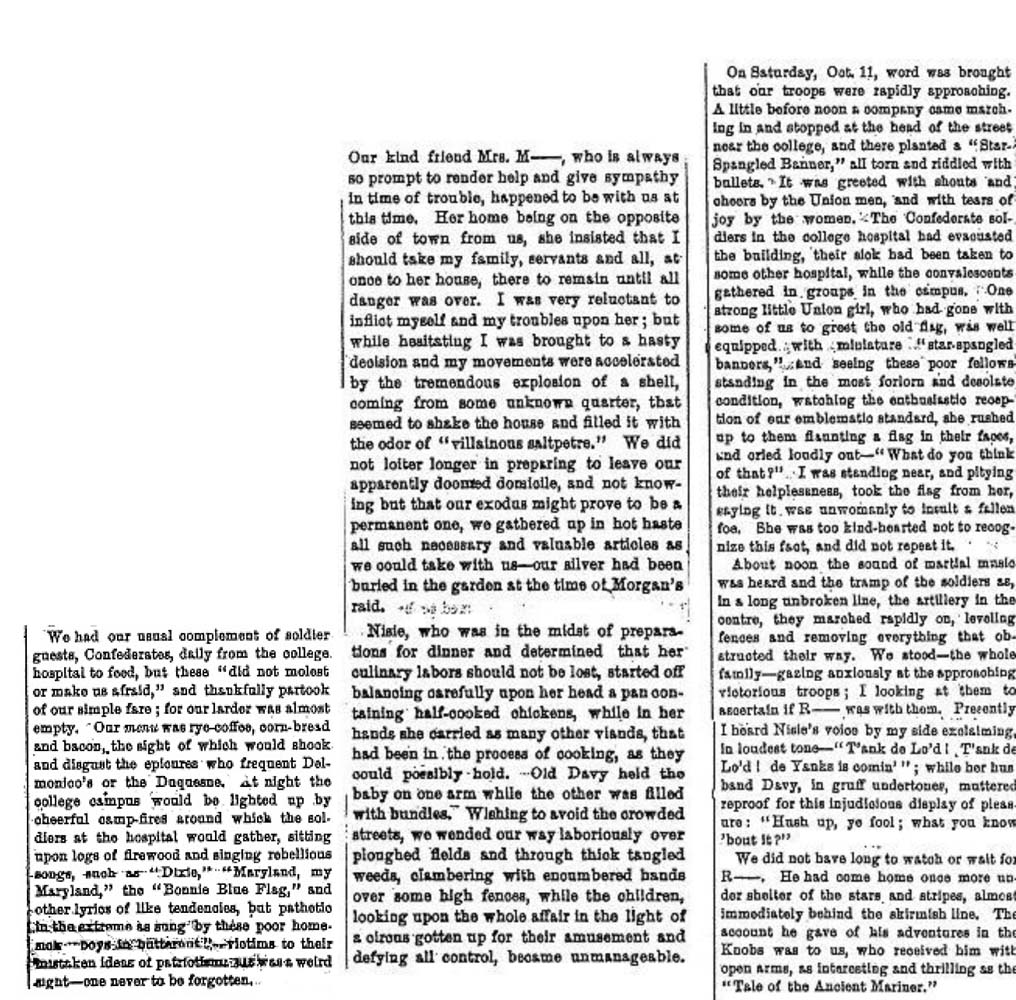Neither Northern nor Southern
Centre College During the
Antebellum Era and the Civil War
By Laura Garrett
The Battle of Perryville at Centre
The fall of 1862 was hot and dry. One Centre graduate and Confederate soldier wrote in his diary that "I know not when I suffered more from heat and dust than I did today. The thermometer rose to 94 degrees in the shade ..." The drought left the town of Perryville with the most water in the region. It was this water that drew Confederate General Braxton Bragg to Boyle County: his troops took possession of Centre's campus that September. Mrs. E. B. Patterson, wife of Centre professor Robert Patterson, wrote that the soldiers would sit on the lawn in front of Old Centre at night singing "Dixie," the anthem of the Confederacy.
The Battle of Perryville took place on October 8 and 9, with Gen. Bragg's troops fighting Union soldiers under Gen. Buell. The second day of the Battle, only six students came for classes at Centre, so classes were cancelled and the campus buildings were turned into hospitals. Said one student: "I saw the poor, sickly wounded soldiers all over [Old Centre]." The fighting spread to Danville as well: Mrs. Patterson wrote that a shell exploded near her house and "seemed to shake the house and filled it with the odor of 'villainous saltpeter.'" Later that evening, drunken soldiers knocked on Mrs. Patterson's door and demanded dinner.
Wounded soldiers from both sides filled Danville's buildings after the Battle, until when on October 11 a short battle near the present-day Boyle County Fairgrounds gave the Union a victory. Mrs. Patterson wrote that citizens shouted with joy when the Union troops entered the town, and when a soldier placed an American flag near Centre's campus, "it was greeted with shouts and cheers by the Union men, and with tears of joy by the women." One of Mrs. Patterson's slaves cried out, "T'ank de Lo'd! T'ank de Lo'd! De Yanks is comin'."
The Union army occupied Centre"s campus for another eight months, leaving Old Centre in shambles. One member of the class of 1864 wrote that "there was not much left except the walls. The desks and chairs were practically used up. Some of the class rooms that had heavy oak benches were simply defaced by names being cut on them. The large majority of the benches in the old chapel were useless, badly broken up." At the end of the War, Centre received $430 in restitution for damages from the federal government. The Battle is considered a turning point in the Civil War, for it helped the Union to maintain control of Kentucky.





